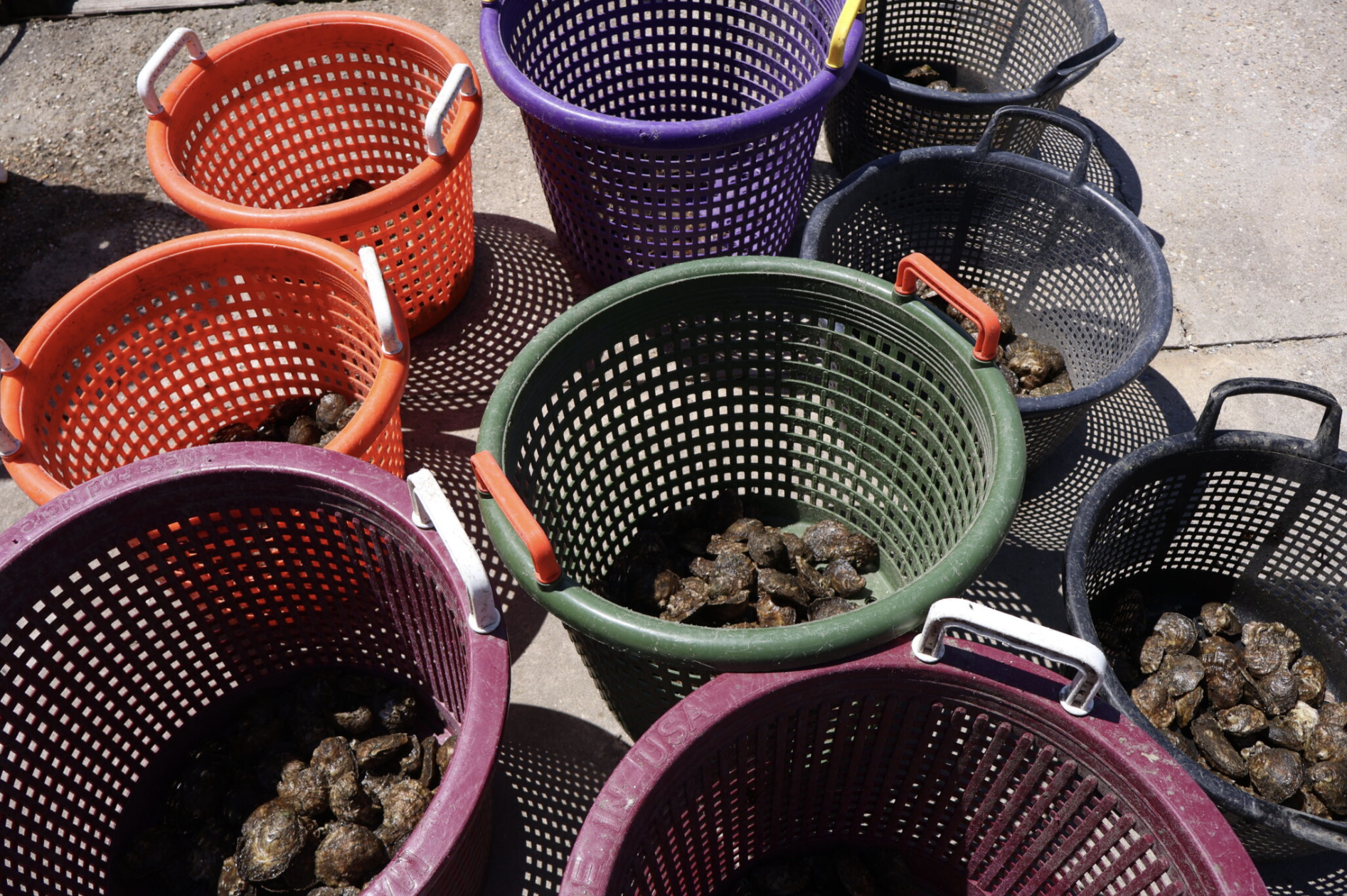The Louisiana Department of Health shared this information on 26/8, stating that since the beginning of the year, the state has recorded 22 hospitalizations and 6 deaths, including the two recent fatalities.
Jennifer Armentor, a representative of the Health Department, confirmed some of the deaths were linked to oyster consumption but declined to disclose the specific locations where the victims ate. Authorities are investigating the remaining 4 deaths to determine whether the infections stemmed from open wounds or raw seafood consumption. Vibrio infections in Louisiana this year are significantly higher than the annual average.
Dr. Salvador Almagro-Moreno, a Vibrio infection expert at St. Jude Children's Research Hospital, noted that while the number of cases is generally low, the upward trend over the past few decades is clear. The bacteria thrive in the summer months when warmer waters facilitate their growth.
 |
Oysters harvested off the Louisiana coast. Photo: Elise Plunk/Louisiana Illuminator |
Oysters harvested off the Louisiana coast. Photo: Elise Plunk/Louisiana Illuminator
Professor Emeritus Paul Gulig of the University of Florida explained that Vibrio vulnificus is called "flesh-eating" due to its ability to cause severe tissue necrosis. Initial symptoms include nausea, vomiting, and chills, followed by potentially severe swelling and redness of wounds, sometimes requiring amputation to save the patient's life.
Analysis of the 22 hospitalization cases revealed open wounds as the primary infection route, with 18 cases involving direct contact of brackish water with an open wound. Factors exacerbating infections include stomach or liver disease, weakened immune systems, and pregnancy. Mitch Jurisich, chairman of the Louisiana Oyster Task Force, emphasized the importance of consumer awareness of the risks, particularly for individuals with health conditions who should avoid raw seafood.
Professor Antarpreet Jutla, an engineering specialist at the University of Florida who researches Vibrio bacteria, stated that while Vibrio vulnificus infections are rare, they tend to increase after storms. In the US, around 150 to 200 infections are reported annually.
Doctors advise covering all open wounds before entering the sea. If infection is suspected, individuals should seek immediate medical attention. Prompt treatment can be the deciding factor between a mild illness and severe complications.
"Delayed medical attention often leads to more severe complications, while those who receive antibiotics on the first day of symptoms have a good chance of recovery and avoiding serious consequences," said Norman Beatty, an infectious disease specialist at the University of Florida health system.
My Y (Louisiana Illuminator)












